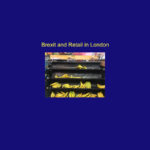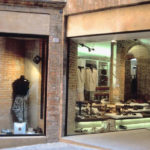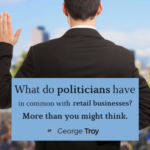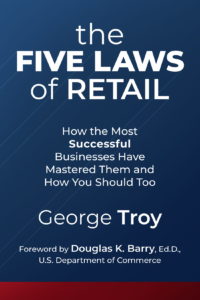Why Retail Businesses Go Out of Business
Written in entertaining, everyday language, not business jargon, The Five Laws of Retail emerged from the author’s thirty-five-year career as a senior executive for some of the best-known and most successful retail brands in the U.S. and globally (including Williams-Sonoma and Pottery Barn, UGG-Australia, and traditional department stores). Troy has innovated, improved, qualified, and quantified operations and sales of retail brands on a global as well as domestic basis. While directing such aspects of the companies’ retail businesses as merchandising, buying, marketing, operations, real estate, store construction, and management, he made it a point to observe retailing operations—both from direct personal experience and over the course of centuries of history—to learn what worked, what didn’t, and why. In doing so, he discovered that there were five laws determining the success or failure of any retail operation.
Let’s take a quick look at why this brand-new (though ages-old) way of understanding retail and retailers is so urgently needed in today’s economy—and indeed in any economy, since the observations and proven track record behind these Five Laws is timeless.
Why Retail Businesses Go Out of Business
According to the U.S. Small Business Association, 50 percent of new businesses fail. And nowhere is this more patently visible than in the field of retail, the “second largest industry in the United States, both in number of establishments and number of employees.”[1] There are, according to the U.S. Census Bureau Statistics of Business,[2] a total of:
- 2,544,592 million firms in retail trade;
- 3,472,803 establishments[3] in retail trade; and
- 37,460,004 people employed in retail trade as of 2012.
In 2013, only a year later, these statistics rose to 3.6 million bricks-and-mortar retail establishments, and 42 million retail jobs supported by retailers in the U.S.[4] And when you consider the number of entrepreneurs in business—50–84 million in the U.S. and almost 400 million in 54 countries,[5] plus an estimated 12–24 million online stores[6] and 25 million sellers on eBay worldwide[7]—it becomes obvious that retailers deserve all the help they can get.
“Going Out of Business” signs. Storefronts that remain vacant for years. Bankruptcy filings. These and other signs of the times make it clear (and, often, poignant) that these retailers did not have what it took to make their businesses prosper and endure. Most likely, they did not know what it really took, or they would have taken those measures, right?
While the prevailing wisdom tends to point to factors such as undercapitalization, there have been businesses with impressive capitalization that also have failed. The venerable Macy’s filed for bankruptcy before coming back in a better way. Ford Motors’ Edsel was highly capitalized in the 1950s and given the full promotional treatment, yet it failed spectacularly enough that the very name “Edsel” became a synonym for a product that’s a loser and a retailing passion that’s about to bite off its own tail.
So it’s not always about capitalization; it’s not even always about “location, location, location.” According to veteran retailer George Troy, who took retail sales of UGG-Australia from $0 to $400 million across six countries in Europe and Asia in only eight years, retail failure is what happens when you ignore and/or violate any or all of the Five Laws of Retail. In his groundbreaking book by the same name, Troy—called “one of the country’s most successful retailers and merchandisers” by Douglas K. Barry, Ph.D. of the U.S. Department of Commerce—identifies five specific “Laws” that determine the lasting success or failure of any retail enterprise.
[1] Retailing in the 21st Century, by Chris Thomas and Rick Segel. Wiley (2006)
[2] http://www.census.gov/econ/susb/
[3] According to the U.S. Census Bureau, a firm is a business organization or entity consisting of one domestic establishment (location) or more under common ownership or control. All establishments of subsidiary firms are included as part of the owning or controlling firm. An establishment is a business or industrial unit at a single location that distributes goods or performs services. https://ask.census.gov/faq.php?id=5000&faqId=487
[4] Ibid., Retailing in the 21st Century.
[5] http://www.numberof.net/number-of-entrepreneurs-in-us/, June 5, 2013.
[6] https://www.quora.com/How-many-online-retail-stores-are-there-in-the-world
[7] http://selectusa.commerce.gov/industry-snapshots/retail-services-industry-united-states















